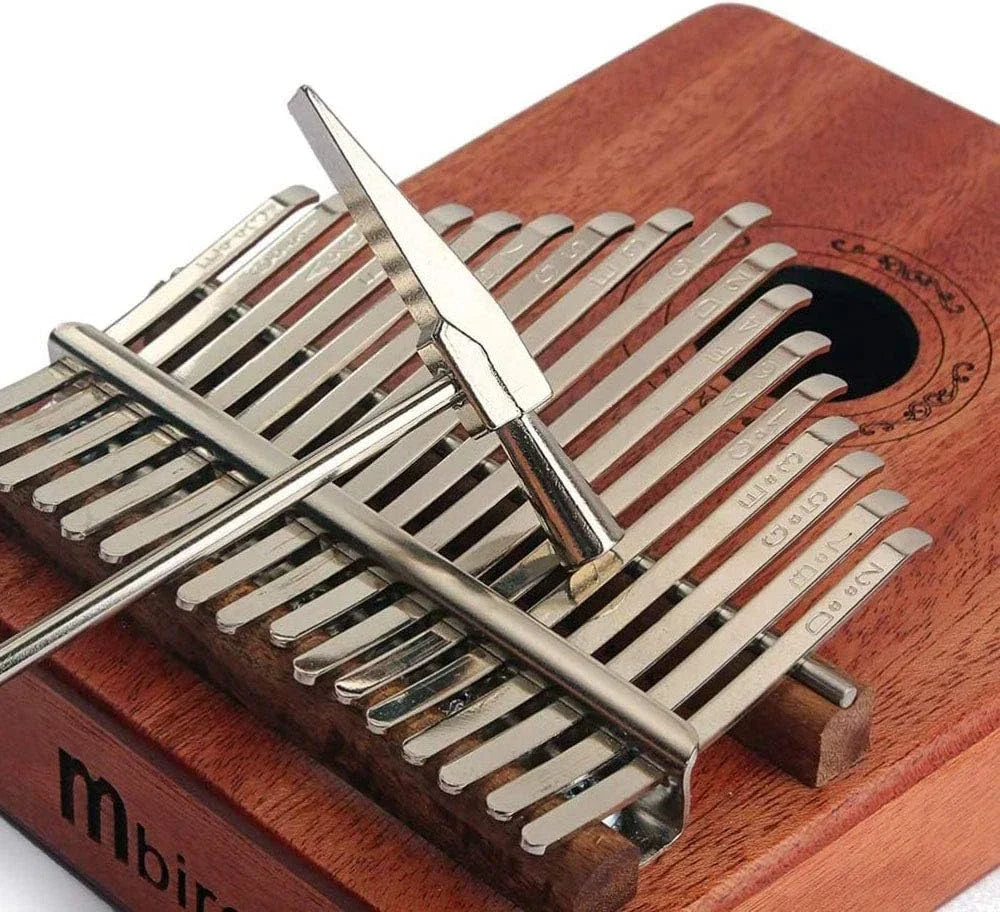How to Tune a Kalimba? Essential Tuning Tools and a Tutorial for Beginners

The kalimba (also known as the "thumb piano") is beloved for its ethereal, crisp sound. However, to create beautiful melodies, accurate tuning is essential.
If you've just picked up a kalimba and find that its notes are a bit "off," or you're unsure how to maintain it, don't worry! Tuning a kalimba is actually very simple. This guide will provide you with a comprehensive tutorial so you can easily master the tuning technique.
Preparation: Tools Needed for Kalimba Tuning
Before you start, you'll need to have the following two tools ready:
-
Tuning Hammer This is the main tool for adjusting pitch. It usually comes with the kalimba and is small and elegant. You'll use it to gently tap the tines to change their pitch.
-
Tuner This is the key tool for checking if a note is in tune. You can choose either:
-
A Mobile Tuning App: This is the most convenient and common option. We recommend free apps like "Tuner T1" or "gStrings."
-
A Physical Clip-On Tuner: If you often tune in noisy environments, this type of tuner clips onto the kalimba and will be more accurate.
-
Three-Step Kalimba Tuning for Beginners
Once you have your tools ready, you can start tuning.
Step 1: Open the Tuner
-
Place your phone close to the kalimba, or clip the physical tuner onto the instrument's body.
-
Open the tuning app and make sure it's set to "Hz" and "Chromatic" mode.
-
The standard kalimba key is C major. Refer to your scale chart (usually included with the kalimba) to confirm the correct pitch for each tine.
Step 2: Pluck a Tine and Watch the Needle
-
Gently pluck a tine with your thumbnail or thumb, and let the note ring out.
-
Observe the tuner's needle:
-
Needle is centered and green: Congratulations, this note is in tune!
-
Needle is to the left and red or yellow: The pitch is too low; you need to raise it.
-
Needle is to the right and red or yellow: The pitch is too high; you need to lower it.
-
Step 3: Use the Tuning Hammer to Adjust the Pitch
-
To Raise the Pitch: Use the tuning hammer to gently tap the bottom of the tine (the end closer to the sound hole), pushing it inward. After each tap, pluck the tine again to check the tuner until the needle is centered.
-
To Lower the Pitch: Use the tuning hammer to gently tap the top of the tine, pulling it outward. Again, check the pitch after each tap.
Remember the simple principle: "In to raise, out to lower." This process requires patience, so use gentle force